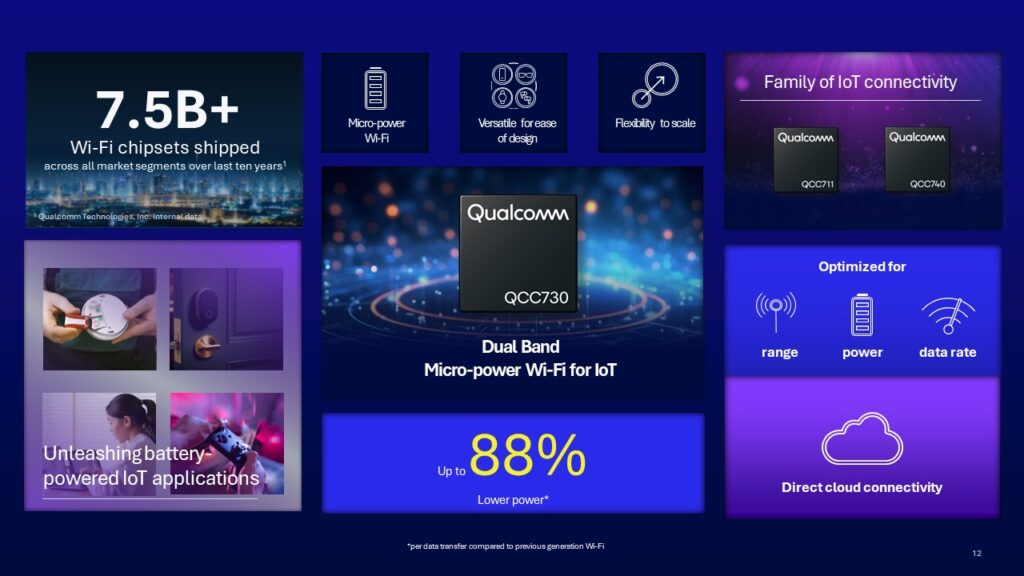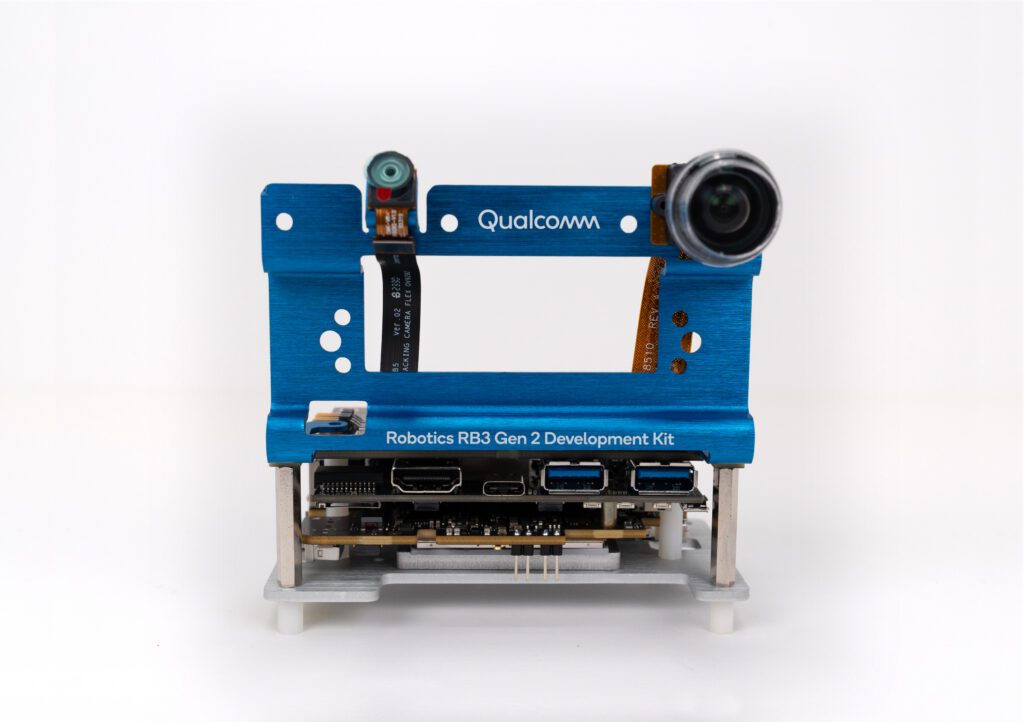Qualcomm will also expand its portfolio to address the safety, operating environment and mechanical handling requirements for industrial grade solutions
Qualcomm Technologies has released a “breakthrough micro-power” Wi-Fi system-on-chip (SoC) for battery-powered IoT, plus new “AI-ready” IoT and industrial platforms at this year’s Embedded World, taking place this week in Nuremberg, Germany. It said the new products, the QCC730 SoC Wi-Fi solution and the RB3 Gen 2 Platform, will provide “critical upgrades” to enable on-device AI in higher-performing low-power IoT products and applications. Samples ship in June 2024.
The QCC730 SoC Wi-Fi solution
In a press pre-brief, Qualcomm Senior Director of IoT product marketing Leilani DeLeon claimed that QCC730 SoC dual-band, micro-power Wi-Fi processor will “revolutionize the battery powered IoT space in three key ways: Power efficiency, versatility and flexibility.

She explained that QCC730 provides up to 88% lower power per data transfer than previous generations, and that its versatility will enable developers to implement the solution as a high-performance alternative to Bluetooth IoT applications. “Using Wi-Fi solves any congestion problems in the 2.4 GHz band by giving applications access to the 5 GHz band,” she continued. “This means higher throughput for faster data speeds, longer range and better coverage. Typically, because of low-power requirements, you would use Bluetooth and use an IoT bridge. This IoT bridge is needed to collect to the cloud. Now, with QCC730, you can completely replace the Bluetooth with Wi-Fi and eliminate the hub.”
This level of versatility supports more flexible design capabilities and direct cloud connectivity.
The Qualcomm RB3 Gen 2 Platform
The Qualcomm RB3 Gen 2 Platform is a hardware and software solution that utilizes the Qualcomm QCS6490 processor and delivers a 10x increase in on-device AI processing, support for quadruple 8MP+ camera sensors, computer vision and integrated Wi-Fi 6E. The company said it expects the RB3 Gen 2 to be used in a wide range of products, including robots, drones, industrial handheld devices, industrial and connected cameras, AI edge boxes and intelligent displays.

“Now layer on advanced AI capabilities to those use cases and applications and we introduce an interface between the machines and humans that not only address gains in productivity, efficiency and sustainability, but factor in making different or challenging tasks much easier, and therefore, contributing to overall working wellbeing,” DeLeon told the media.
The platform is also supported in the Qualcomm AI Hub, which contains a library of continuously refreshed pre-optimized AI models, as well as support for Qualcomm Linux —a comprehensive package of OS, software, tools and documentation designed for the company’s platforms.
Additional announcements
Other bits of news include an expansion to its portfolio to address the safety, operating environment and mechanical handling requirements for industrial grade solutions — with samples expected in June 2024 — as well as its March acquisition of Foundries.IO, open-source cloud-native platform provider. “With the… acquisition, we are pleased to come to together to support the available of more secure solutions for IoT and edge devices,” said DeLeon.

